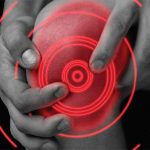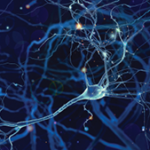WASHINGTON, D.C.—A deeper understanding of the mechanisms of pain and why some people become hypersensitive to typically innocuous stimuli may one day lead to more effective, targeted pain therapies, said Clifford Woolf, MD, PhD, a neurobiologist at Children’s Hospital of Boston and professor of neurology at Harvard Medical School in Boston, in a lecture titled, “Mechanisms of Pain in Rheumatic Diseases,” at the 2012 ACR/ARHP Annual Meeting, held here November 9–14. [Editor’s Note: This session was recorded and is available via ACR SessionSelect at www.rheumatology.org.]
There are different types of pain, and differentiating these types is an important tool in the diagnosis and treatment of disease, said Dr. Woolf. Nociceptive pain, the sensing of noxious stimuli, requires intense stimuli for activation, such as extreme heat, cold, or chemical irritants. Our skin is densely packed with nociceptive fibers that help us detect noxious stimuli. In patients with inflammatory pain, neuropathic pain related to neuronal damage, or dysfunctional pain that occurs despite the absence of inflammation or nervous system damage, there typically is a low pain threshold.
Nociceptive pain serves an important physiological purpose, Dr. Woolf said. “The pain itself has a very unpleasant quality, but this has a key protective factor,” he added. “We not only withdraw from the stimuli, but we learn from it. This is most forcefully taught to us when we see patients with congenital insensitivity to pain. Indeed, their life expectancy is reduced.”
Key proteins are involved in the transduction of pain signals in the nervous system. The first of these proteins to be isolated and cloned was TRPV1, which is activated by capsaicin and helps us recognize noxious heat. Identifying these led to the development of potential pain therapies like TRPV1 antagonists and protein kinase C inhibitors, which are now in clinical trials.
Pain Hypersensitivity
Some patients develop a pain hypersensitivity, Dr. Woolf said. These patients’ pain threshold is lower than normal, and the duration of their pain response may be long lasting. There are two main mechanisms of pain hypersensitivity: peripheral sensitization and central sensitization. Peripheral sensitization is associated with inflammation and tissue damage found in many rheumatic diseases. It’s marked by a lower pain threshold and an increase in the patient’s response to the peripheral ends of nociceptors, the nerve cell endings that send pain signals to the brain in response to stimuli.
Peripheral sensitization is the result of changes in transduction proteins that affect the excitability of nociceptors. Noxious stimuli, like excessive heat, are converted to an electric response in the nervous system via these proteins. Normally, humans begin to find heat painful at approximately 108° Fahrenheit, but after peripheral sensitization, that threshold may fall. Proteins like TRPV1 may be involved in this process. A warm shower may feel painfully hot, for example, Dr. Woolf said.
“Our modern view of inflammatory pain and inflammation is that when there is tissue damage caused by the cells of the immune system, these act on the nervous system, which in turn can then activate and recruit immune cells, the interaction of the two begin to manifest in pain hypersensitivity,” Dr. Woolf noted.
Central Sensitization
Central sensitization involves an increase in the excitability of neurons in the central nervous system, and patients may have a dramatic response to seemingly innocuous stimuli. Inflammation or tissue damage is not involved. Conditions marked by central sensitization may include fibromyalgia, irritable bowel syndrome, and temporomandibular joint disorder. In the past 10 to 15 years, scientists have learned that, in central sensitization, there is a change in the synaptic connections between nociceptors and neurons. The synaptic connection is not fixed but plastic and flexible, he noted. A change in synaptic efficacy increases the excitability of the neurons in the central nervous system.
In central sensitization, proteins may be altered due to a process called phosphorylation, Dr. Woolf said. This process, in which a phosphate is added to the protein molecule, can dramatically alter the protein’s properties that result in lowered pain threshold or heat sensitivity levels. Phosphorylation may also extend the duration of sensitivity for hours, but typically recovers. However, transcriptional changes in the central nervous system also can occur in some situations, and they and the pain hypersensitivity they produce may be long lasting or even permanent, he added. Central sensitization patients often experience dynamic tactile allodynia, pain in response to a light moving touch as well as secondary hyperalgesia, pain sensitivity outside an area of inflammation, or prolonged aftersensations of pain long after the stimulus ends. This condition is a key indicator of fundamental plastic changes in the central nervous system, he said.
Targeting Therapy for Pain
In recent years, scientists have been able to separate different classes of neurons and label nociceptors using gene reporters, Dr. Woolf said. They can look for nociceptors that detect cytokines or chemokines and that would be activated in patients with autoimmune diseases. Inflammatory mediators can directly activate nociceptors, and these neurons are inflammation detectors to some extent, Dr. Woolf said.
One exciting therapeutic prospect for pain hypersensitivity conditions is a better understanding of the protein nerve growth factor (NGF). NGF is required for the normal development of nociceptor neurons and also now is recognized to play a key role in inflammation. NGF levels increase dramatically in inflamed tissues and contribute to pain hypersensitivity and heat hyperalgesia, he said. Anti-NGF therapy offers a treatment possibility that is neither a nonsteroidal antiinflammatory drug nor an immune suppressant, and early clinical data are promising, he said. Current therapies for central sensitization, like NMDA antagonists, may have psychotic-like effects and should not be the standard of care, Dr. Woolf said. Acupuncture may work in some patients due to the placebo response, he added. “This is not in any way a derogatory term. It is a real response. It’s a perfectly reasonable treatment choice. But we have no way of knowing who will respond to it.”
Patients may experience changes in their pain pathways that trigger heightened, even long-lasting, pain hypersensitivity. In the recent MOST study of 3,026 adults with knee osteoarthritis or high risk of knee osteoarthritis, a lower pain threshold was detected that was not associated with mechanical damage of the joint and, in some cases, lasted after joint arthroplasty.
Scientists have not yet determined why this occurs, but research seems to indicate a deeper connection between injury or illness and changes in the nervous system, Dr. Woolf said. ”We need to begin to look at these systems as acting together rather than functioning separately,” he said. “We also need to recognize that chronic pain may be a manifestation of a disease state of the nervous system.”
Susan Berstein is a freelance medical journalist based in Atlanta.


